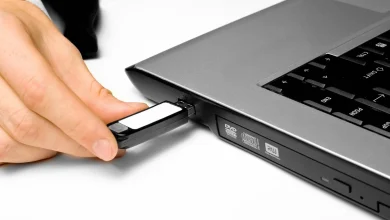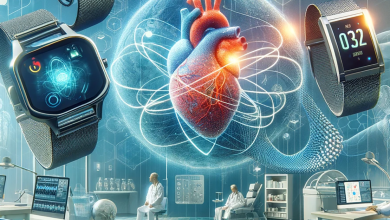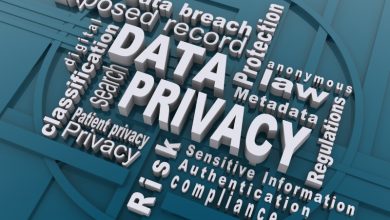What is the Internet of Things (IoT)?

What is the Internet of Things (IoT)?
The Internet of Things, or IoT, connects everyday devices—from smartphones and appliances to industrial machines—via the internet, enabling them to communicate and share data without human intervention. Imagine a world where your fridge tells you what to buy, your car schedules its own maintenance, and even your thermostat learns and adapts to your habits. With IoT, these scenarios are already becoming reality. Initially, IoT started with a few connected devices, but today, it’s reshaping how we live, work, and interact.
Here’s a closer look at how IoT operates, its applications across different sectors, its advantages, and the challenges that need addressing to unlock its full potential.
How Does IoT Work?
Understanding IoT means recognizing the network that connects various devices, allowing them to gather and exchange data. IoT works in several interconnected steps:
- Sensors and Devices – Each IoT device has sensors that collect specific data, like temperature, light, or movement. For instance, a fitness tracker records heart rate and activity levels, providing useful health insights.
- Connectivity – Once data is gathered, the devices send it over the internet, often through Wi-Fi, Bluetooth, or other networks, to central servers for processing.
- Data Processing – After reaching the server, data is analyzed, often in real time. This analysis could mean anything from detecting patterns to diagnosing issues or even issuing alerts.
- User Interface – Users interact with IoT devices through interfaces, such as mobile apps or web dashboards, allowing them to control settings and receive notifications remotely.
IoT’s strength comes from combining these components into a seamless network. By making data flow effortlessly, it improves the way we interact with technology, boosting convenience and effectiveness.

Key Applications of IoT
Because IoT is highly adaptable, it has been implemented across many sectors, transforming industries with advanced data analytics and automation. Here are a few of its key applications:
- Smart Homes – In smart homes, IoT automates various devices, from lighting and security systems to thermostats and kitchen appliances. Imagine your home adjusting temperature based on your schedule, or lights switching off when a room is empty. This not only makes life easier but also reduces energy consumption.
- Healthcare – IoT has opened new possibilities in healthcare. Wearable devices monitor heart rates, oxygen levels, and other vital signs, providing valuable data to doctors and alerting users to potential health issues. Furthermore, IoT-enabled devices allow remote health monitoring, giving patients and healthcare providers crucial information without needing physical visits.
- Manufacturing – Industrial IoT, also known as IIoT, allows manufacturers to monitor machinery and equipment in real-time. This helps predict maintenance needs, preventing breakdowns and costly downtime. Additionally, IoT can enhance productivity by tracking materials, equipment, and supply chains more efficiently.
- Transportation and Logistics – IoT is streamlining transportation by tracking vehicle health, monitoring cargo, and optimizing routes. Companies use IoT devices to monitor fleet conditions, reducing maintenance costs, while customers enjoy faster deliveries through optimized logistics.
- Agriculture – Agriculture benefits significantly from IoT, especially in monitoring crop health, soil conditions, and weather forecasts. By automating irrigation systems and monitoring pest levels, farmers can improve yields while conserving resources.
- Retail – IoT brings valuable insights to retail. In-store sensors track customer behavior, helping stores optimize layouts and offer personalized deals. Meanwhile, inventory tracking improves stock management, reducing the risk of running out of popular items.
- Smart Cities – IoT supports smart city initiatives by connecting infrastructure, managing traffic, and monitoring air quality. By analyzing data from sensors, cities can reduce pollution, optimize energy use, and enhance public safety, creating healthier urban environments.
Benefits of IoT
IoT delivers a wide range of advantages that improve efficiency, safety, and sustainability across industries:
- Enhanced Efficiency – IoT devices can perform tasks automatically, eliminating the need for constant human input. Whether in homes or factories, this reduces errors, saves time, and boosts productivity.
- Improved Decision-Making – With real-time data, IoT enables better decision-making. For example, businesses can monitor performance metrics continuously, making swift adjustments as needed.
- Cost Savings – IoT optimizes operations, reducing expenses over time. For example, predictive maintenance in manufacturing minimizes costly repairs, while smart home devices reduce energy bills by adjusting usage based on patterns.
- Convenience – IoT enhances daily convenience, allowing users to monitor, control, and automate tasks from anywhere. Imagine locking doors, turning off lights, or adjusting thermostats remotely with ease.
- Enhanced Security – IoT security systems protect homes, offices, and public spaces with real-time monitoring. For instance, smart cameras can notify users instantly when they detect unusual activity, allowing for faster responses to potential threats.
- Better Resource Management – IoT improves resource efficiency in agriculture, energy, and water management by monitoring usage and automating adjustments as needed, contributing to a more sustainable environment.
Challenges of IoT
However, with these benefits come significant challenges that need to be tackled to ensure IoT’s sustainable growth:
- Security Concerns – With so many connected devices, IoT networks are susceptible to cyberattacks. Vulnerable devices can expose users to data breaches and hacking, highlighting the need for robust security measures.
- Privacy Issues – IoT devices collect vast amounts of personal data, raising questions about how this data is used and who has access. Stronger privacy regulations and transparent data practices are crucial for protecting user information.
- Interoperability – IoT devices often use various standards and protocols, making it difficult for different systems to work together. Standardizing IoT protocols is essential to enhance compatibility and ensure devices can communicate seamlessly.
- Data Management – IoT generates massive data volumes, creating challenges in storage, processing, and analysis. Efficient data management is crucial to derive meaningful insights without overwhelming systems.
- High Costs – For some businesses, the initial investment in IoT infrastructure, devices, and management platforms can be high. Yet, as technology advances and costs drop, IoT is expected to become more accessible.

IoT Security Solutions
Given these security challenges, addressing IoT security is paramount. Here are some of the main solutions aimed at safeguarding IoT networks:
- Device Authentication – Requiring IoT devices to authenticate before joining networks ensures that only trusted devices have access.
- Data Encryption – Encrypting data as it travels between devices protects it from unauthorized access, reducing the risk of data breaches.
- Firmware Updates – Regular updates fix vulnerabilities, improving device security over time. Automated updates help ensure devices remain protected from the latest threats.
- Network Segmentation – Isolating IoT devices within specific network sections limits the potential spread of attacks, adding an extra layer of security.
- AI-Powered Security – AI can detect unusual patterns in data, identifying potential security threats before they escalate.
Future of IoT
Looking ahead, IoT is poised for significant growth, with billions of connected devices expected by 2030. Here’s a glimpse into IoT’s future potential:
- AI Integration – Artificial intelligence will make IoT devices smarter, enabling them to make instant decisions based on real-time data. This integration will make IoT more efficient, as devices learn to anticipate needs and take action without human intervention.
- 5G Connectivity – The expansion of 5G will enable faster, more reliable connections, supporting advanced IoT applications like autonomous vehicles and real-time smart city monitoring.
- Expansion of Smart Cities – IoT is key to the development of smart cities, where interconnected systems handle everything from waste management to public safety. This will enhance urban living by reducing pollution, managing resources efficiently, and improving public services.
- Healthcare Innovations – IoT will continue revolutionizing healthcare by enabling more remote monitoring solutions and early diagnosis tools. As a result, patients will enjoy improved access to healthcare, especially in remote areas.
- Environmental Monitoring – IoT will support environmental conservation through better monitoring of air quality, water levels, and climate data, offering insights to help combat pollution and climate change.
- Industry 4.0 – IoT is a key enabler of Industry 4.0, the next phase of industrial advancement. Smart factories powered by IoT will improve manufacturing processes by predicting equipment failures and automating tasks, leading to higher productivity and cost savings.
Final Thoughts
The Internet of Things has the power to transform our lives by connecting devices, gathering real-time data, and enabling automation. As more industries recognize its potential, IoT will become a crucial part of daily life, making processes more efficient, enhancing security, and creating new opportunities for innovation. However, addressing challenges like security, privacy, and data management remains essential to realize IoT’s full potential.
As technology advances and IoT devices become more accessible, we can look forward to a world where the Internet of Things plays an integral role in connecting people, processes, and things in ways previously unimaginable.
Internet of things.




